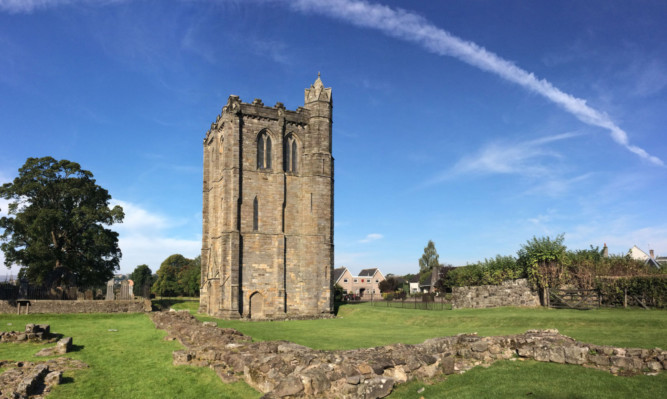The wall of a medieval harbour has been uncovered at one of Scotland’s most historic abbeys, where Robert the Bruce’s son was confirmed as a future King of Scotland.
Archaeologists now plan further digs at the ruins of Cambuskenneth Abbey, near Stirling, in a bid to discover the remains of ancient boats which could have been used to transport Scotland’s royalty.
The abbey was founded in 1147 by King David I to serve his nearby home of Stirling Castle, and was of similar importance to the castle as Holyrood Abbey was to Edinburgh Castle.
The abbey was the site of Robert the Bruce’s parliament in 1326, at which Scottish nobility and clergy swore fealty to his son David Bruce as heir to the Scottish crown.
It is also the burial place of King James III, who was murdered before the Battle of Sauchieburn in 1488.
The ruined abbey is surrounded on three sides by the River Forth and Stirling Council archaeologist Murray Cook said historians knew the building was home to several harbours but no concrete evidence had previously been uncovered until the weekend.
He said: “We know the abbey had a series of harbours because it was based on the river and water transport was quite important.
“A boat has been discovered in the abbey in the past but we had never found the wall of the harbour before.
“If you have got a harbour and it’s all silted up then, in theory, there should be boats there and there might be anything under the harbour.
“The harbour would have been used by abbots and monks and probably, if kings and queens were coming that way, they would have used it, too.”
The wall was discovered at an archaeological dig as part of Stirling Doors Open day on Sunday.
Now, Mr Cook said further digs would be carried out next year to discover more of the hidden harbour.
The abbey fell into disuse during the Scottish Reformation and is said to have been ruined around 1560 when many of the buildings were burned and looted and the property was put to use as a quarry.
Now, only the dramatic gothic bell tower and west doorway survive, along with a collection of medieval grave slabs, including one marking the death of King James III, funded by Queen Victoria.
